Paederia foetida
Paederia foetida
1. The products in our compound library are selected from thousands of unique natural products; 2. It has the characteristics of diverse structure, diverse sources and wide coverage of activities; 3. Provide information on the activity of products from major journals, patents and research reports around the world, providing theoretical direction and research basis for further research and screening; 4. Free combination according to the type, source, target and disease of natural product; 5. The compound powder is placed in a covered tube and then discharged into a 10 x 10 cryostat; 6. Transport in ice pack or dry ice pack. Please store it at -20 °C as soon as possible after receiving the product, and use it as soon as possible after opening.
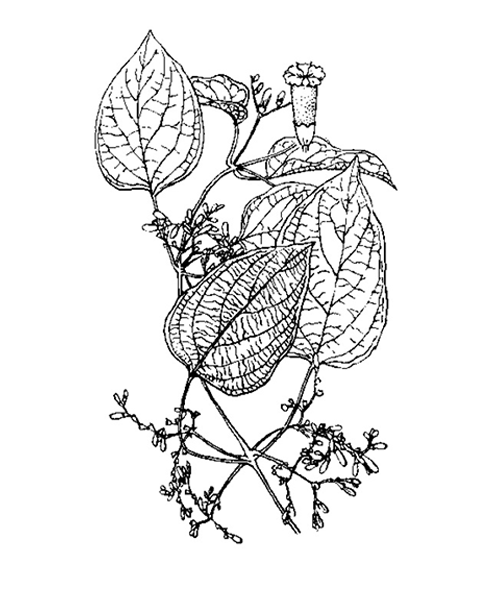
Natural products/compounds from Paederia foetida
- Cat.No. Product Name CAS Number COA
-
BCN7159
Oleic acid112-80-1
Instructions
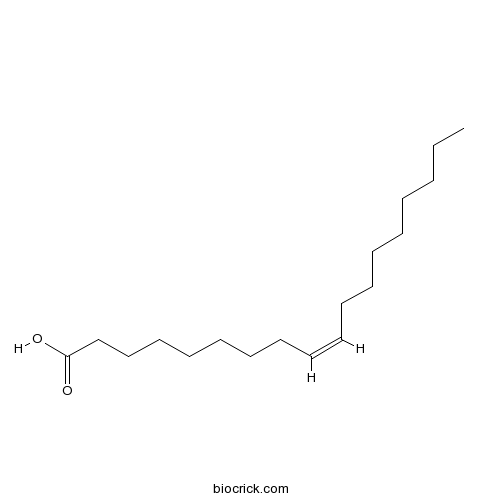
-
BCN3439
Paederosidic acid methyl ester122413-01-8
Instructions

-
BCN6231
Asperuloside14259-45-1
Instructions
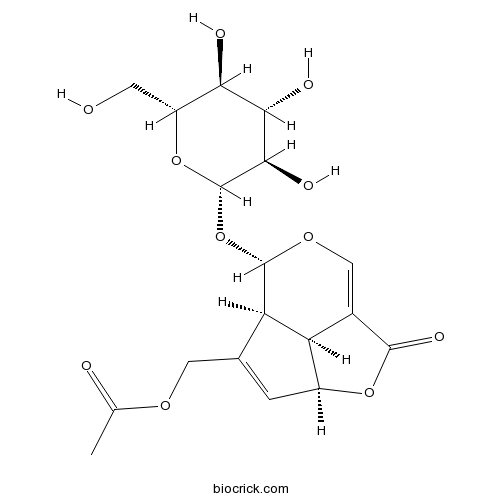
-
BCN6232
Daphylloside14260-99-2
Instructions

-
BCN3438
Paederosidic acid18842-98-3
Instructions

-
BCN3437
Paederoside20547-45-9
Instructions

-
BCN5979
Caffeic acid331-39-5
Instructions
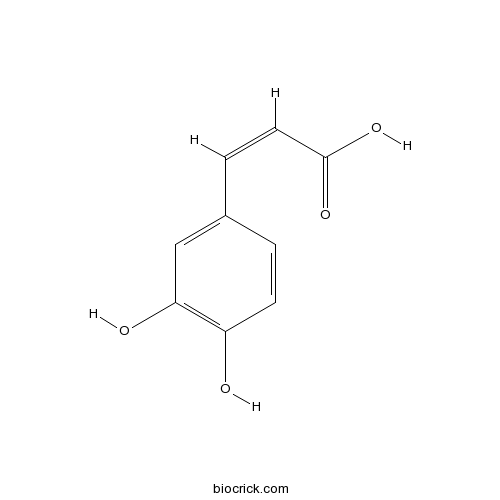
-
BCN8319
alpha-Linolenic acid463-40-1
Instructions
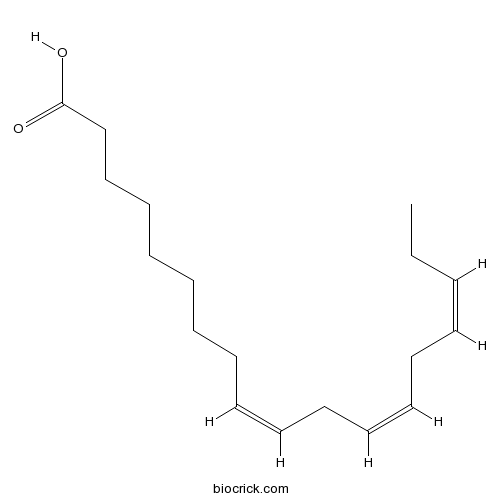
-
BCN5554
Linarin480-36-4
Instructions

-
BCN4582
Isoscopoletin776-86-3
Instructions

Paederia foetida Linn. promoted biogenic gold and silver nanoparticles: Synthesis, characterization, photocatalytic and in vitro efficacy against clinically isolated pathogens.[Pubmed: 28599238]
Development of newer improved therapeutic agents with efficient antimicrobial activities continues to draw attention of researchers till date. Moreover, abatement of polluting dyes released from industry with enhanced efficiency is currently being considered as challenging task for people working on material sciences. In the present study, we report a facile biogenic synthesis of gold and silver nanoparticles (NPs) in which aqueous extracts of Paederia foetida Linn. was used as reducing as well as stabilizing agent. The biosynthesized Au and Ag NPs were characterized by UV-visible spectroscopy (UV-vis), Fourier transform infrared spectroscopy (FTIR), powder X-ray diffraction analysis (XRD) and transmission electron microscopy (TEM). The photocatalytic activity of these nanoparticles were tested against Rhodamine B (RhB). The antimicrobial activity of these biosynthesized NPs were investigated against four human pathogens viz. B. cereus, E. coli, S. aureus and A. niger. Biogenic silver nanoparticles presented a strong antimicrobial activity against B. cereus (26.13) followed by E. coli (26.02), S. aureus (25.43) and A. niger (22.69). Ag NPs owing to their small size (5-25nm) could have easily penetrate into the cell membrane, disturb the metabolism, cause irretrievable damage finally leading to the microbial cell death. Interestingly biogenic gold nanoparticles didn't show any antimicrobial activity.
Renoprotective and antioxidative effects of methanolic Paederia foetida leaf extract on experimental diabetic nephropathy in rats.[Pubmed: 28111217]
Paederia foetida Linn. (Family: Rubiaceae) is widely used as a natural remedy for diabetes mellitus by the Nepali and Lepcha tribes of Sikkim and Darjeeling Himalayan region. The plant is administered to a diabetic individual in the form of leaf infusion for 2-3 weeks. Therefore, we investigated the effects of methanolic leaf extract of Paederia foetida (MEPF) on alloxan (ALX) induced diabetic renal oxidative stress and NF-kB dependent renoinflammatory events in rat. Method Effects of MEPF on blood glucose, glomerular filtration rate (GFR), serum and oxidative stress markers were evaluated in ALX induced diabetic wistar rats. Enzyme linked immunosorbent assay (ELISA) was carried out to estimate serum IL-6, IL-1β, TNF-α and renal tissue NF-kB p65 levels. MEPF treatment was given to the diabetic rats at a dose of 250 and 500mg/kg body weight (b.w.).
Large Scale Screening of Ethnomedicinal Plants for Identification of Potential Antibacterial Compounds.[Pubmed: 26985889]
The global burden of bacterial infections is very high and has been exacerbated by increasing resistance to multiple antibiotics. Antibiotic resistance leads to failed treatment of infections, which can ultimately lead to death. To overcome antibiotic resistance, it is necessary to identify new antibacterial agents. In this study, a total of 662 plant extracts (diverse parts) from 222 plant species (82 families, 177 genera) were screened for antibacterial activity using the agar cup plate method. The aqueous and methanolic extracts were prepared from diverse plant parts and screened against eight bacterial (two Gram-positive and six Gram-negative) species, most of which are involved in common infections with multiple antibiotic resistance. The methanolic extracts of several plants were shown to have zones of inhibition ≥ 12 mm against both Gram-positive and Gram-negative bacteria. The minimum inhibitory concentration was calculated only with methanolic extracts of selected plants, those showed zone of inhibition ≥ 12 mm against both Gram-positive and Gram-negative bacteria. Several extracts had minimum inhibitory concentration ≤ 1 mg/mL. Specifically Adhatoda vasica, Ageratum conyzoides, Alangium salvifolium, Alpinia galanga, Andrographis paniculata, Anogeissus latifolia, Annona squamosa, A. reticulate, Azadirachta indica, Buchanania lanzan, Cassia fistula, Celastrus paniculatus, Centella asiatica, Clausena excavate, Cleome viscosa, Cleistanthus collinus, Clerodendrum indicum, Croton roxburghii, Diospyros melanoxylon, Eleutherine bulbosa, Erycibe paniculata, Eryngium foetidum, Garcinia cowa, Helicteres isora, Hemidesmus indicus, Holarrhena antidysenterica, Lannea coromandelica, Millettia extensa, Mimusops elengi, Nyctanthes arbor-tristis, Oroxylum indicum, Paederia foetida, Pterospermum acerifolium, Punica granatum, Semecarpus anacardium, Spondias pinnata, Terminalia alata and Vitex negundo were shown to have significant antimicrobial activity. The species listed here were shown to have anti-infective activity against both Gram-positive and Gram-negative bacteria. These results may serve as a guide for selecting plant species that could yield the highest probability of finding promising compounds responsible for the antibacterial activities against a broad spectrum of bacterial species. Further investigation of the phytochemicals from these plants will help to identify the lead compounds for drug discovery.
Gastroprotective mechanism of Paederia foetida Linn. (Rubiaceae)--a popular edible plant used by the tribal community of North-East India.[Pubmed: 26335308]
The objective of the present study is to evaluate the gastroprotective activity of Paederia foetida L. leaf for gastric ulcer.
Paederia foetida Linn. inhibits adjuvant induced arthritis by suppression of PGE(2) and COX-2 expression via nuclear factor-κB.[Pubmed: 25893742]
The current investigation was undertaken to determine the anti-inflammatory and antioxidant effects of Paederia foetida Linn. (PF) along with its mechanism of action when implemented in tissue protection. HPTLC was used in the identification of the compound quercetin, while in vitro analysis confirmed the significance of the antioxidant and anti-inflammatory action of PF. We initially demonstrated the in vivo anti-inflammatory effect of PF, evaluating it against a variety of phlogistic agents as well as turpentine oil, prostaglandin and arachidonic acid. Groups of rats, fasted overnight, were treated as follows: Group I: normal control (vehicle), Group II: PF (100 mg kg(-1)), Group III: arthritic control (CFA only, 0.05 ml), Group IV, V, VI: CFA (0.05 ml) + PF (25, 50 and 100 mg kg(-1)) and Group VII: CFA (0.05 ml) + indomethacin (10 mg per kg b.w.). PF significantly protected against paw edema, arthritic index and body weight alteration induced by Complete Fruend's Adjuvant (CFA). Other observations, like histological and macroscopic changes, were observed in CFA induced inflammation in knee joints. Subcutaneous administration of CFA was accompanied by proinflammatory cytokine status, as appraised by the amplification of interleukin-2 (IL-2), interleukin-1β (IL-1β) and tumor necrosis factor (TNF-α); oxidative stress status was estimated by the enhancement of the level of lipid peroxidation (LPO) and the depletion of superoxide dismutase (SOD), glutathione peroxidase (GPx) and glutathione (GSH). Pre-treatment with PF significantly (P < 0.001) protected against CFA induced oxidative stress and proinflammatory cytokines. More prominently, CFA administration augmented tissue and plasma superoxide (O2) and hydrogen peroxide (H2O2) levels, while the PF pre-treatment significantly (P < 0.001) reversed all CFA induced intracellular interruption. Following CFA induced arthritis, PF was tested for its free radical scavenging activity against the DPPH and ABTS radicals and its inhibitory proficiency against COX-1 and COX-2 in vitro. Considering the above, the current research confirmed momentous protection against CFA induced arthritis, which could be attributed to its anti-inflammatory and pro-oxidant nature.
A phytochemical, pharmacological and clinical profile of Paederia foetida and P. scandens.[Pubmed: 25115105]
Paederia foetida and P. scandens are two important and well explored Paederia species (Rubiaceae). P. foetida, which grows mainly in China, Bangladesh, India and Mauritius, has been used in folk medicine for the treatment of inflammation, piles, and diarrhea, while P. scandens is used to treat aches, jaundice, dysentery and dyspepsia as a folk medicine in the southern region of China, Vietnam, India and Japan. This review covers the comprehensive knowledge of the traditional medicinal uses, phytochemistry, pharmacology, toxicology and clinical studies of P. foetida and P. scandens. Phytochemical studies revealed the presence of iridoids, flavonoids, volatile oil, and other metabolites in these two species, which possess versatile bioactivities like antinociceptive, anti-inflammatory, antidiarrheal, antitussive and antitumor activities. An injection developed from P. scandens has been clinically used as an analgesic drug. P. foetida and P. scandens have emerged as a good source of traditional medicines. Available scientific references reveal that the biological properties of these two Paederia species have been evaluated by modem pharmacological studies. However, bioguided isolation of active constituent responsible for the medical uses, as well as study of their structure-activity relationship and mode of actions, is urgently needed.
Population survey of phytoseiid mites and spider mites on peach leaves and wild plants in Japanese peach orchard.[Pubmed: 24659516]
A population survey of phytoseiid mites and spider mites was conducted on peach leaves and wild plants in Japanese peach orchards having different pesticide practices. The phytoseiid mite species composition on peach leaves and wild plants, as estimated using quantitative sequencing, changed during the survey period. Moreover, it varied among study sites. The phytoseiid mite species compositions were similar between peach leaves and some wild plants, such as Veronica persica, Paederia foetida, Persicaria longiseta, and Oxalis corniculata with larger quantities of phytoseiid mites, especially after mid-summer. A PCR-based method to detect the ribosomal ITS sequences of Tetranychus kanzawai and Panonychus mori from phytoseiid mites was developed. Results showed that Euseius sojaensis (specialized pollen feeder/generalist predator) uses both spider mites as prey in the field.
Paederia foetida Linn. leaf extract: an antihyperlipidemic, antihyperglycaemic and antioxidant activity.[Pubmed: 24564866]
The primary objective of the present investigation is to evaluate the antidiabetic, antihyperlidemic and antioxidant activity of the methanolic extract of the Paederia foetida Linn. (PF) leaf extract in the streptozotocin induced diabetic rats.
Effect of ethanolic extract of leaves of Paederia foetida Linn. on acetic acid induced colitis in albino rats.[Pubmed: 24130378]
To evaluate the effect of ethanolic extract of leaves of Paederia foetida on acetic acid induced colitis in albino rats.


